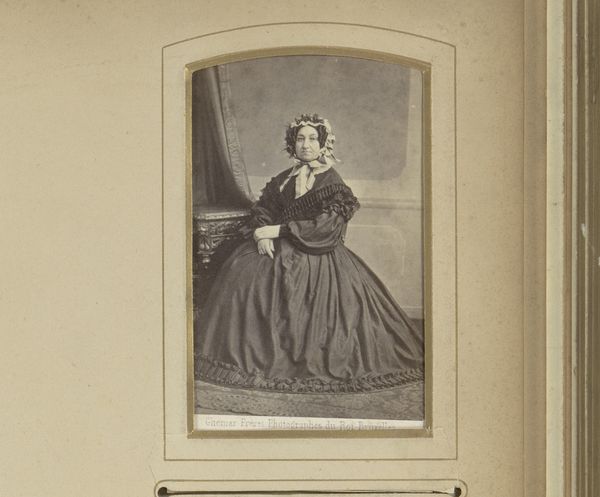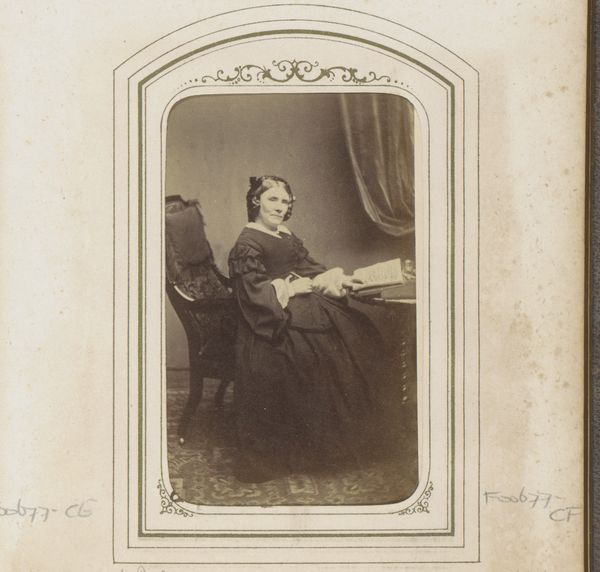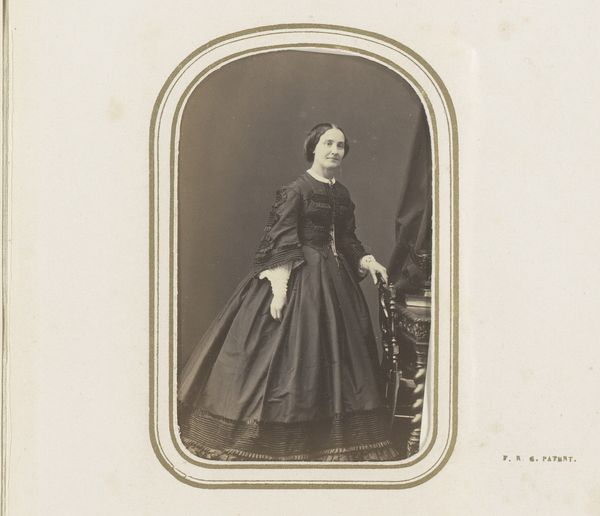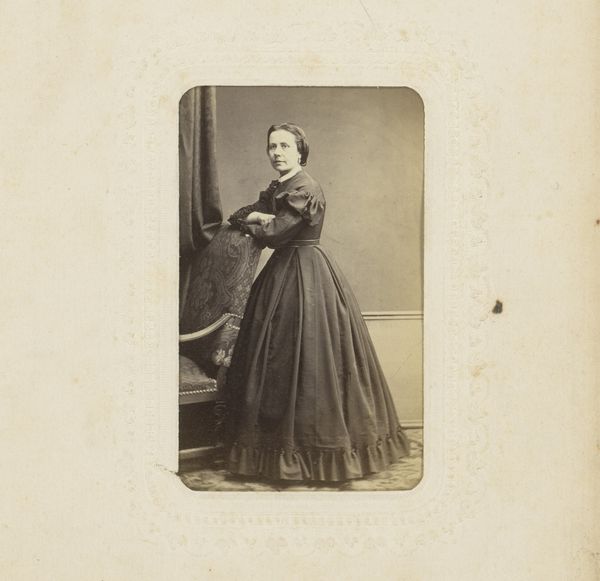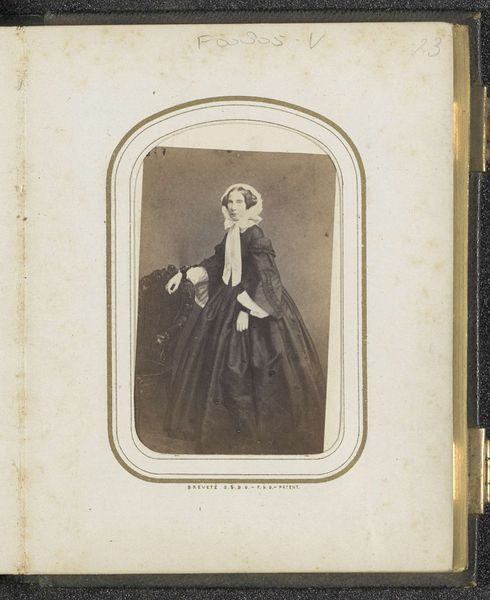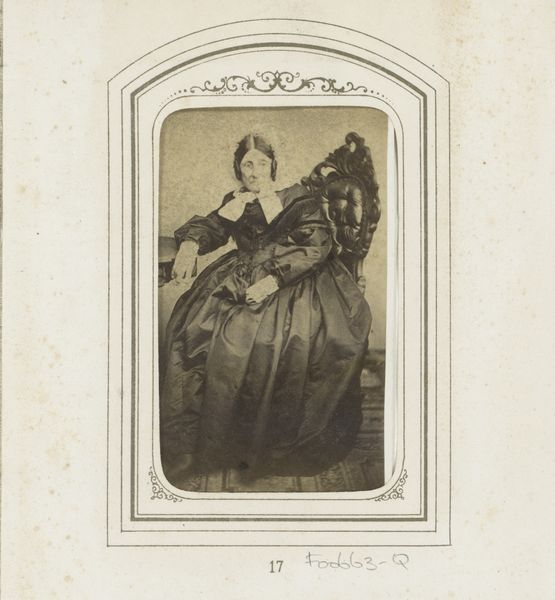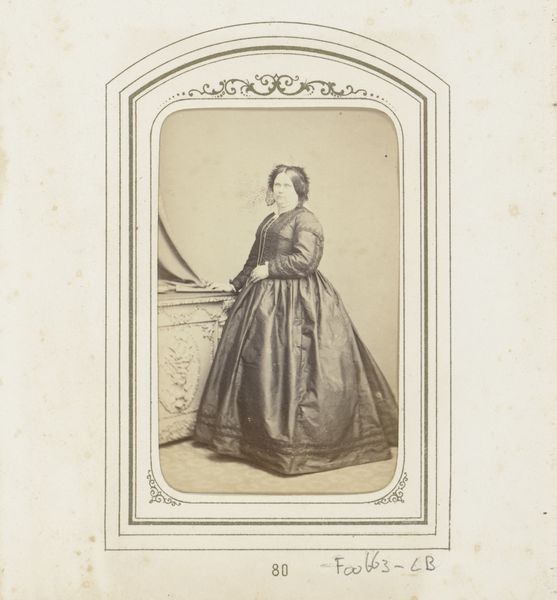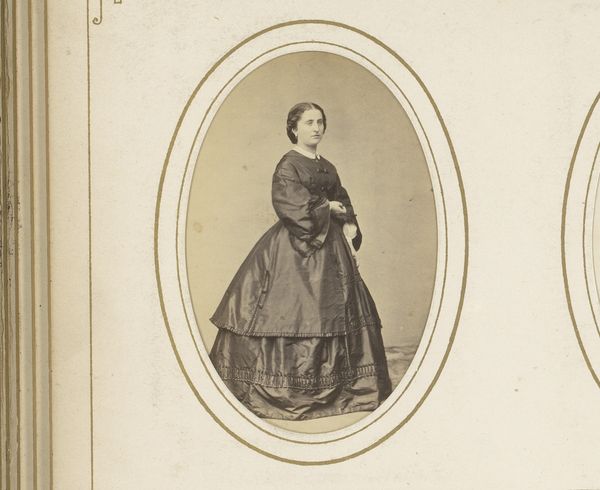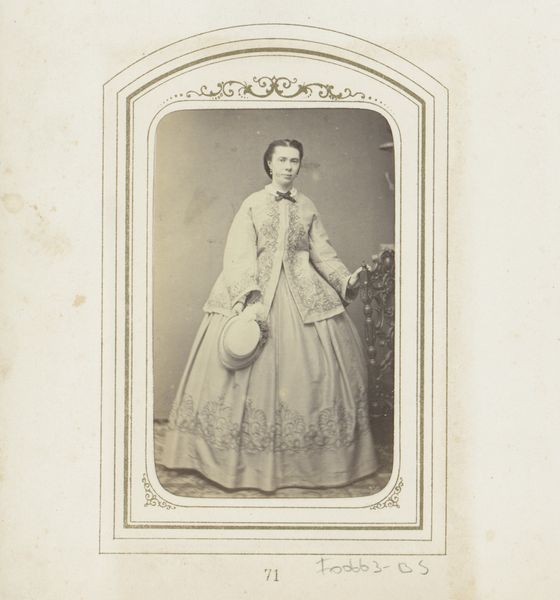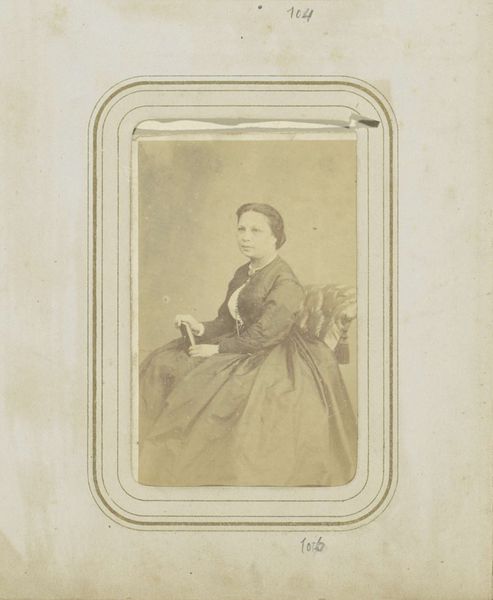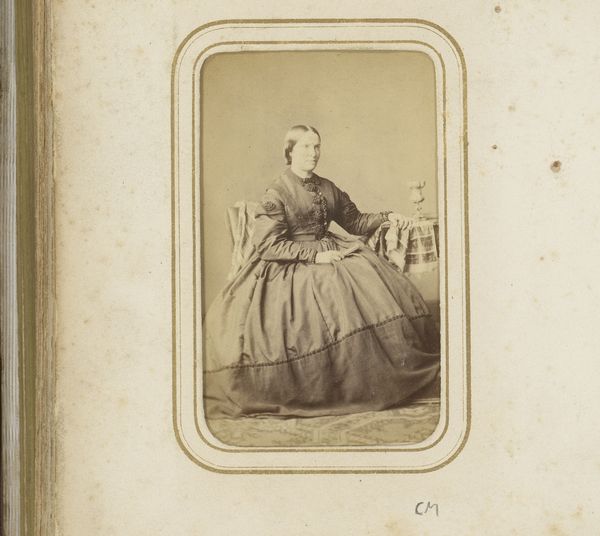
daguerreotype, photography
#
portrait
#
daguerreotype
#
photography
#
historical photography
#
historical fashion
#
genre-painting
Dimensions: height 85 mm, width 53 mm
Copyright: Rijks Museum: Open Domain
Curator: This daguerreotype, identified as "Portret van een zittende vrouw" or "Portrait of a Seated Woman," was taken by Maurits Verveer sometime between 1861 and 1883. Editor: The first impression is one of rigid composure. The subject, framed tightly within this ornamented rectangular border, feels almost entombed. Curator: Daguerreotypes, especially in portraiture, necessitated a stillness that often translated into a certain formality, an intentional display of character. The severe dress, with its focus on modesty, amplifies this. Editor: Exactly. Notice how the voluminous skirt, rendered in stark grayscale, dominates the composition, creating an inverted pyramid effect. It contrasts with the delicate floral pattern of the chair and draws all the attention. The woman's face becomes a focal point of concentrated detail in an otherwise plain design. Curator: Her hands, gently clasped in her lap, perhaps communicate a level of decorum befitting her social status at the time. The chair is also noteworthy— the presence of carefully selected, luxurious fabrics. It served to underline the sitter's societal position within an emerging Dutch bourgeoise. Editor: Yet I see an undercurrent of stoicism there, perhaps even resignation. This relates, obviously, to photographic traditions from the era that tended to create serious impressions but also hints that fashion or presentation might signify conformity. The light reflecting off the jewelry pieces feels subtle in the setting of so much fabric. Curator: That resignation could easily be linked to the cultural weight imposed on women of that era— an era when self-expression was intricately tied to public perception. But images from this era become coded signifiers once we unpack their historical context. Editor: Right. What at first appears merely stiff unveils hidden emotional landscapes and socially constructed standards. Close visual parsing shows an interaction between personal expression, performance, and historical pressures that change the impression and reading of the work.
Comments
No comments
Be the first to comment and join the conversation on the ultimate creative platform.

